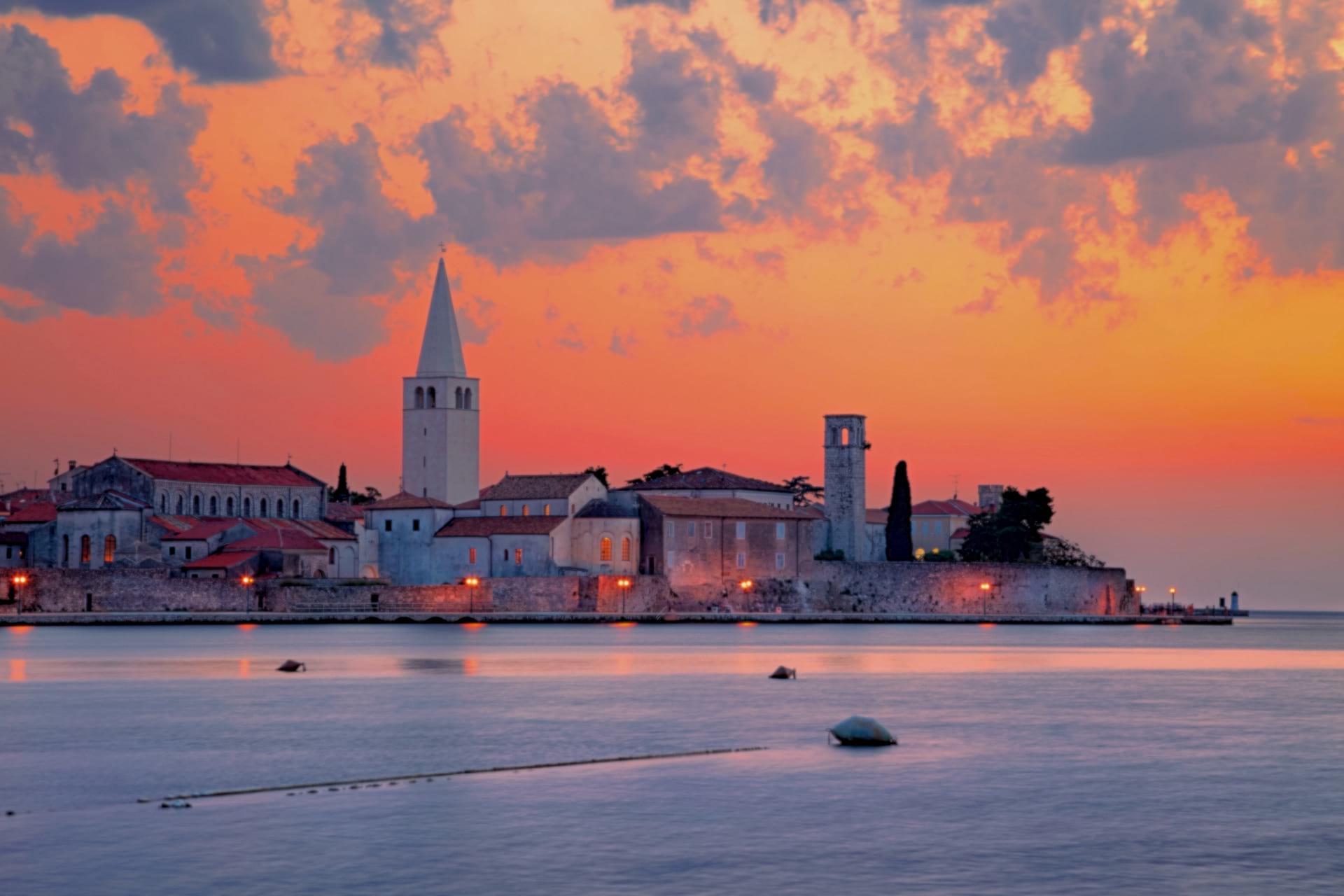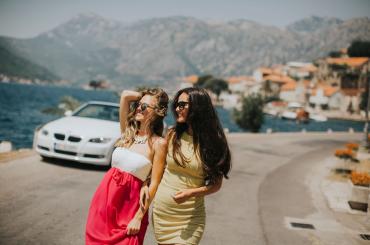
Tour Croatia+ trip
Although small in surface area, Croatia abounds in rich cultural heritage, and UNESCO's World Heritage List substantiates this with a registered 27 tangible and intangible goods. There is hardly a city or region in Croatia where you will not encounter them, perfect for discovering the country's cultural identity.
Extremely versatile trip designer with an established career in travel business
Fill out a few details and get a detailed itinerary with all inclusions and trip details - we can customize them together
Parts of Croatian heritage, due to their exceptional characteristics, are considered as goods of "outstanding universal value" and are inscribed on the UNESCO List of World Cultural Heritage.
It seems like you are traveling through the time when you look at the old roman cities of Zadar, Split, Šibenik, or Trogir, some more than 3,000 years old. Walk through the historical complex of the Diocletian's Palace in Split and be amazed by the glorious Old Town of Dubrovnik.
Plitvice Lakes National Park is a magical world of lakes, waterfalls, moss and forests
Croatia may be a small country but it has a rich culture and history and it boasts a total of ten UNESCO World Heritage sites. Here are some of the important ones you will see during this trip.
Episcopal Complex of the Euphrasian Basilica in the Historic Centre of Poreč
Along with Pula, Poreč was the first Roman colony in Istria. It retained the ancient layout of the streets in the old town and remains of a Roman temple, and it is also known throughout the world for its sixth-century Basilica. The Euphrasian Basilica is one of the best-preserved early Christian structures and belongs to the most significant historical monuments in the world.
The historic city of Trogir
Trogir's rich culture was created under the influence of old Greeks, Romans, and Venetians.
Trogir's medieval core, surrounded by walls, comprises a preserved castle and tower and a series of dwellings and palaces from the Romanesque, Gothic, Renaissance, and Baroque periods.
The must-see attractions in the town are the Cathedral of St. Lawrence, known for its Romanesque door carved in the 13th century, the Kamerlengo fortress, the 15thcentury loggia, clock tower, and Gothic Renaissance Cipko Palace.
Historical Complex of Split with the Palace of Diocletian
The Palace was built by the Roman emperor Diocletian at the turn of the fourth century A.D. and later served as the basis of the city of Split. A cathedral was built in the Middle Ages along with the ancient mausoleum, churches, fortifications, Gothic and Renaissance palaces.
Diocletian's Palace is a combination of a Roman military camp called Castrum and a luxury villa.
The Palace is divided into four parts and has two main streets. The stone used for the palace building was from the quarry in Seget, from Brač and different parts of the Roman Empire, even from Egypt.
Today, it is fully open for visits and was one of the famous worldwide Game of Thrones show filming locations.
Old City of Dubrovnik
Jutting out into the Adriatic Sea with a backdrop of rugged limestone mountains, Dubrovnik Old Town is known as one of the world's finest and most perfectly preserved medieval cities in the world. For centuries, Dubrovnik rivalled Venice as a trading port, with its vast sturdy stone walls, built between the 11th and 17th centuries, affording protection to this former city-state.
Today, these walls still enclose Dubrovnik's historical centre, and it is possible to walk along them to enjoy the best views of the 'Pearl of the Adriatic' and the surrounding lush green islands. Dubrovnik's Baroque churches, monasteries and palaces; its Renaissance fountains and facades are all intertwined with gleaming wide marble-paved squares, steep cobbled streets and houses, all of which have also remained unchanged for centuries.
The Stari Grad Plain on the island of Hvar
The Stari Grad Plain is an agricultural landscape that the ancient Greek colonists set up in the 4th century B.C. and remains in use today. Stari Grad Plain represents a land organisation system based on geometrical parcels with dry stone wall boundaries. This system was completed from the very first by a rainwater recovery system involving tanks and gutters.
Stećci Medieval Tombstones Graveyards
The most recent Croatian contribution to UNESCO's World Heritage Site list is an honour shared between Croatia, Bosnia-Hercegovina, Montenegro and Serbia, each of whom hosts stećci. Stećci are medieval tombstones notable for their unique design and decoration that typifies funerary art in this region between the 12th and 16th centuries.
Cathedral of St James in Šibenik
The Cathedral of St. James in Šibenik is one of the most important Renaissance architectural monuments in the eastern Adriatic. It is unique because it is a structure built entirely from stone, and over more than 100 years, during the 15th and 16th centuries. The structural characteristics of the Cathedral of St James in Šibenik make it a unique and outstanding building in which Gothic and Renaissance forms have been successfully blended.
Venetian Works of defence - Zadar, Šibenik
This property consists of 15 components of defence works in Italy, Croatia, and Montenegro, spanning more than 1,000 kilometres. Croatian sites include the defensive system of Zadar and St. Nicholas Fortress in Šibenik dating from the 15th to 17th century.
Paklenica, Northern Velebit National Park
Hiking is the only way to get to know Paklenica. The Park area contains 150–200 km of trails and paths, from those intended for tourists, leading from Velika Paklenica Canyon to Manita peć cave, Lugarnica forest cottage and the mountain hut, to those designed for mountaineers, leading to the highest peaks of Velebit. The trails in the Park are marked with boards and mountaineering signs.
Plitvice Lakes National Park
Its status as a UNESCO site comes from its unusual geology, which results from thousands of years of water flowing over limestone and chalk to create natural travertine dams. Over time, water has flowed over the natural limestone and chalk, building natural barriers creating a series of connecting lakes, waterfalls, and caves. The nearby forests are home to bears, wolves, and many rare bird species.
The main attractions of this Park, unique globally, are the 16 small lakes joined by waterfalls created by the sedimentation of travertine, a particular type of limestone. There are also several caves in the Park and springs and flowering meadows.
Private transfer from Zagreb airport to the hotel, followed by check-in and leisure time. Zagreb, known for its manageable size, offers a mix of European metropolis feel and walkable charm. Enjoy exploring the Upper Town, Dolac market, green parks, and promenades. For dinner, try a well-known national restaurant and sample traditional regional dishes. Overnight in Zagreb.
After breakfast, embark on a private guided walking tour of Zagreb, highlighting its history and architecture. Visit key sites like St. Mark's Church, Lotrščak Tower, and the Dolac market. In the afternoon, travel to Marija Bistrica, Croatia’s largest sanctuary, known for its black statue of Our Lady and local crafts. Enjoy a wine tasting at a family farm in the region. Return to Zagreb and overnight.
After breakfast and check-out, drive to Pula for a guided tour of the ancient Roman Amphitheater and other historical sites. Continue to Rovinj, known for its romantic ambiance and Venetian influence. Check in at the hotel and enjoy leisure time exploring Rovinj's picturesque streets and waterfront. Consider a sunset drink at Konoba Veli Jože. Overnight in Rovinj.
Diocletian's Palace is a UNESCO World Heritage site located in the heart of the old town of Split
Start with breakfast and a walking tour of Rovinj, focusing on its unique chimneys and the Church of Saint Euphemia. Drive to Poreč for a tour of the Euphrasian Basilica, renowned for its mosaics. Enjoy lunch on your own and return to Rovinj for an afternoon at leisure. Overnight in Rovinj.
After breakfast, check out and travel to Opatija, a historic spa town known for its grand villas and botanical gardens. After hotel check-in, explore the city at your own pace. Visit the Croatian Walk of Fame and the Maiden with the Seagull statue. Overnight in Opatija.
Depart after breakfast for Plitvice Lakes National Park, featuring a guided tour of its stunning lakes and waterfalls. Continue to Zadar, check-in, and spend the rest of the day exploring the city's ancient streets and architecture. For dinner, try local specialties like blue fish and scampi. Overnight in Zadar.
After breakfast, meet your guide for a hike in Paklenica National Park, including visits to Paklenica mills and Anića Kuk. Enjoy lunch at a family-run farm before returning to Zadar for an evening at leisure. Overnight in Zadar.
Begin with breakfast and check-out, followed by a walking tour of Zadar, including St. Anastasia's Cathedral and the Sea Organ. Travel to Šibenik for a guided tour of its historic centre and UNESCO-listed Cathedral of St. James. Continue to Split, check-in, and dine at a recommended local restaurant. Overnight in Split.
Cathedral of St. Lawrence, built in the 13th century, one of the most significant monuments in Trogir
Enjoy breakfast before a guided tour of Split’s Diocletian's Palace. Travel to Trogir for a visit to the Cathedral of St. Lawrence. Explore the ancient ruins of Salona on the way back to Split. Spend your evening at leisure, perhaps visiting the Matejuška fishing pier. Overnight in Split.
After breakfast, take the ferry to Hvar and enjoy a tour of its highlights, including Fortress Spanjola and St. Stephen's Square. Visit Jelsa and Vrboska before exploring the Stari Grad Plain. Return to Hvar town for leisure time before taking the ferry back to Split. Overnight in Split.
Check-out after breakfast and travel to Dubrovnik, stopping in Ston for an oyster tasting and a visit to the salt pans. Continue to Trsteno Arboretum for a self-guided tour. Arrive in Dubrovnik, check-in, and enjoy the evening at leisure. Overnight in Dubrovnik.
Stroll down the Stradun street, all the way to the Cathedral and the Rector's Palace in the centre of Dubrovnik
Start the day with breakfast followed by a guided tour of Dubrovnik’s Old Town, including key sites like the Rector's Palace and Fort Lovrijenac. Enjoy leisure time in the afternoon to explore the city walls or take the cable car to Srđ Mountain for panoramic views. Overnight in Dubrovnik.
After breakfast, visit the Konavle Valley, including Sokol Kula fortress and a Konavle embroidery workshop. Explore a medieval cemetery and enjoy a traditional lunch at a local farm. Return to Dubrovnik via Cavtat, with time for leisure upon return. Overnight in Dubrovnik.
After breakfast, check-out and enjoy leisure time until your private transfer to Dubrovnik airport. Depending on your departure time, consider visiting a unique museum like the Love Stories Museum. Safe travels back home!
We will double-check availability and make reservations for your rooms, restaurants, guides etc.
With reservations confirmed, we will prepare the best offer possible in regard to your arrival date & party size
You will get the offer via e-mail, along with the payment options. Feel free to request further customisations!
9 DAYS
9 DAYS
6 DAYS



